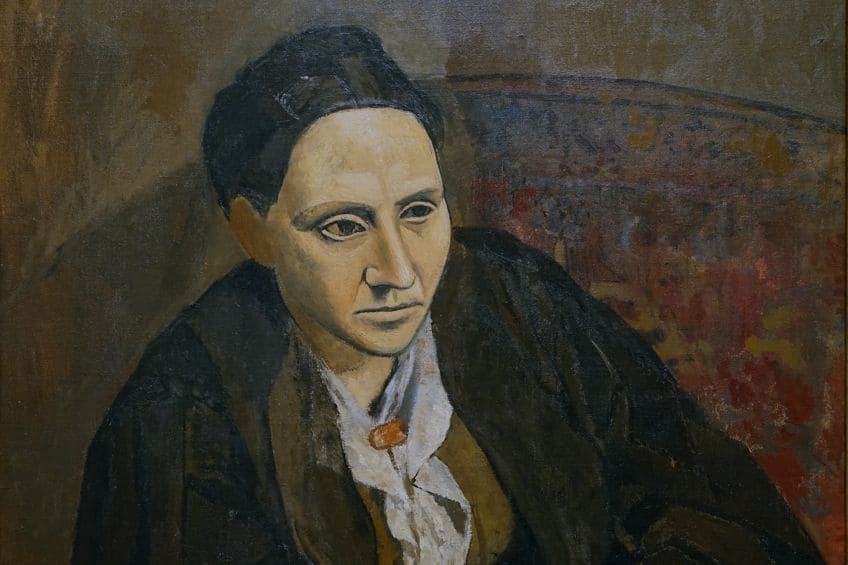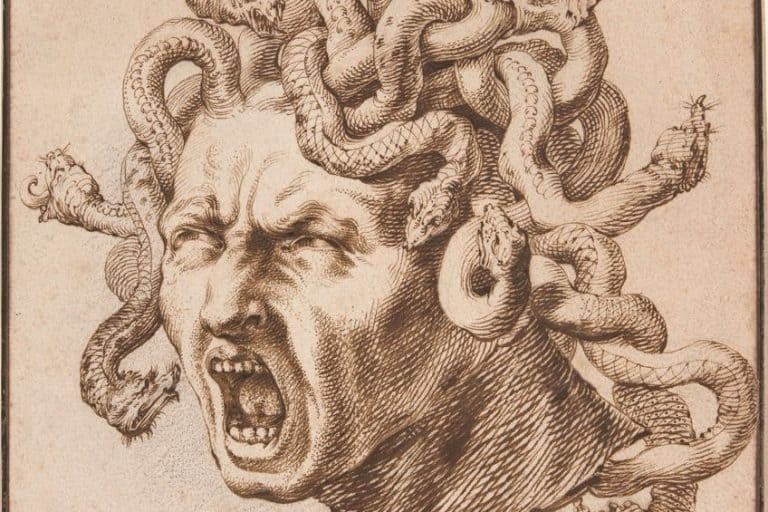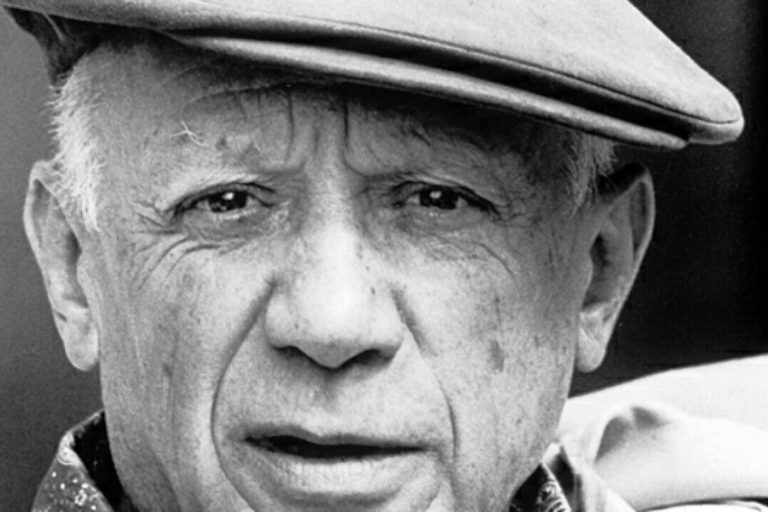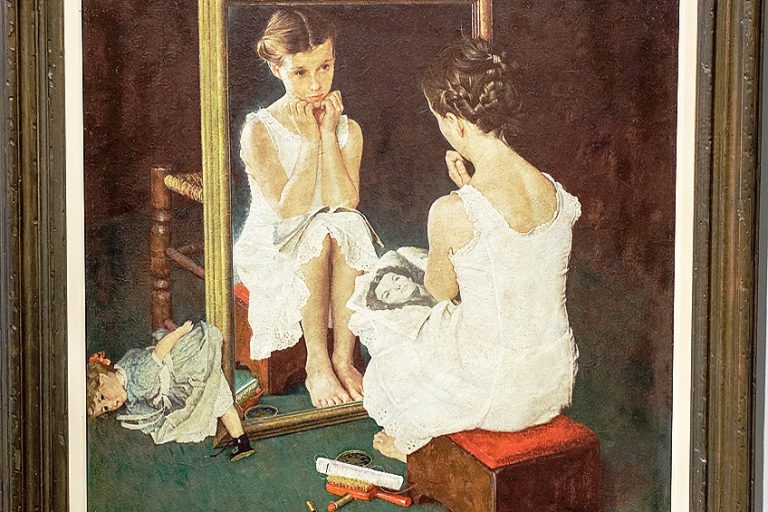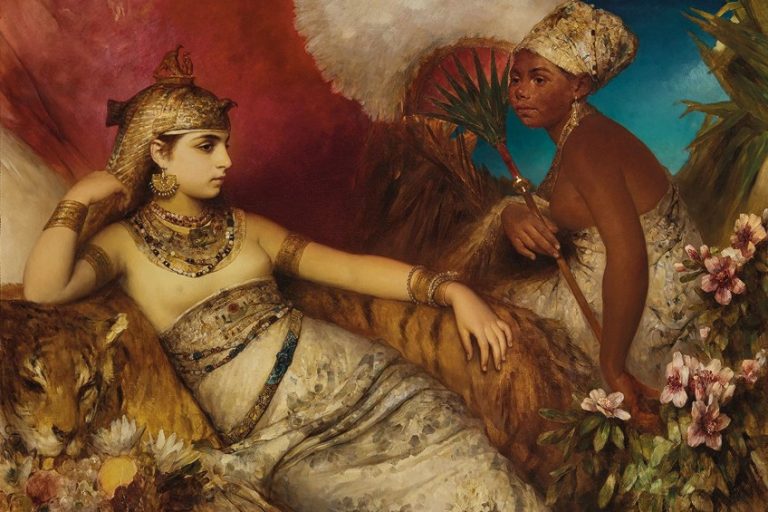“Portrait of Gertrude Stein” by Pablo Picasso – A Formal Analysis
In our exploration of Pablo Picasso’s Portrait of Gertrude Stein, we delve into a masterpiece that bridges the realms of traditional portraiture and modernist innovation. This analysis will provide context on Gertrude Stein’s influence in Picasso’s life and work, a formal examination of the painting’s unique stylistic elements that prelude Cubism, and its significance in the modern art context.
Key Takeaways
- Picasso’s Portrait of Gertrude Stein melds traditional portraiture with emerging modernist elements.
- The painting reflects the significant relationship between an artist and his muse during a pivotal artistic period.
- Today, the work stands as a testament to Picasso’s legacy and his influence on modern art, housed in a prominent New York museum.
The Artist and the Muse
| Artist | Pablo Picasso |
| Date Created | 1905-1906 |
| Medium | Oil on canvas |
| Genre | Portrait |
| Period/Movement | Picasso’s Rose Period |
| Dimensions (cm) | 100 cm × 81.3 cm (39.4 in × 32 in) |
| Series/Versions | N/A |
| Where Is It Housed? | The Metropolitan Museum of Art, New York City |
| What It Is Worth | The value is not publicly disclosed, but as a significant work by Picasso, it would be extremely valuable. |
Pablo Picasso’s portrait of Gertrude Stein is one of the seminal works linking artist and muse in a collaboration that extended beyond the canvas. This section delves into the dynamic between these two figures and their impact on each other’s work.
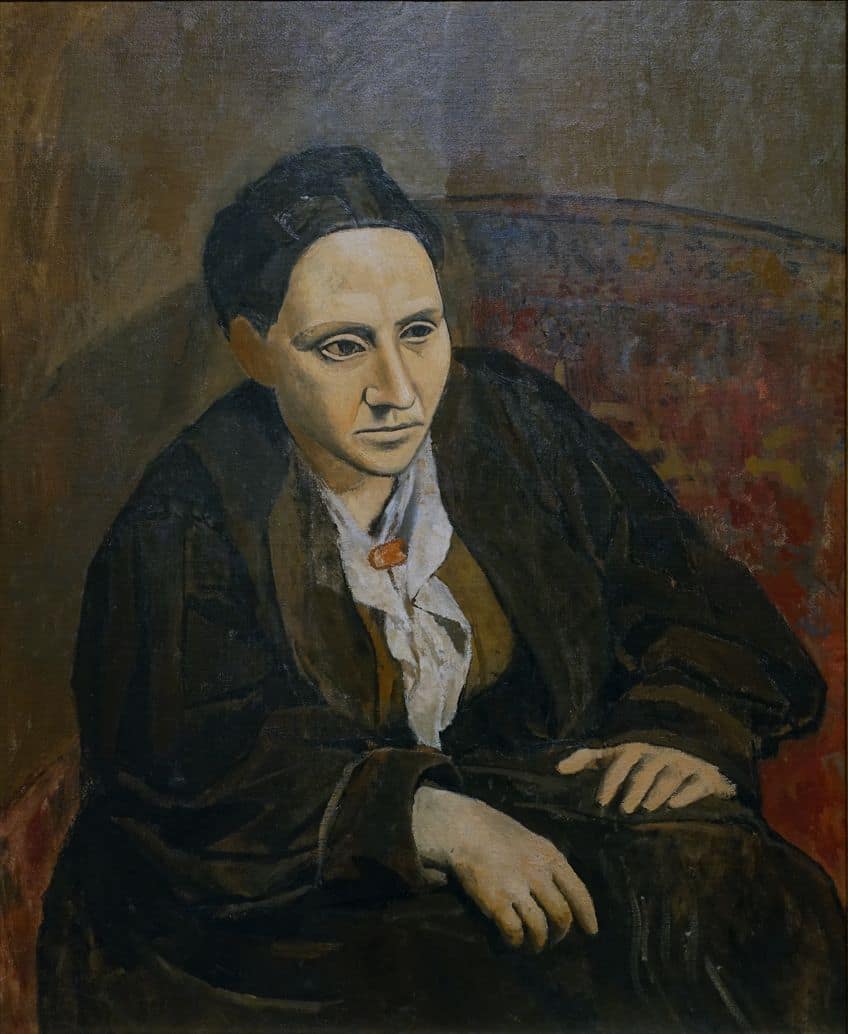
Who is Gertrude Stein?
Gertrude Stein was an American writer and art collector who left a profound mark on the Parisian art scene. Residing in Paris, she became a central figure in the avant-garde art world, hosting a salon that attracted many artists of the Montmartre and Montparnasse quarters, including Pablo Picasso.
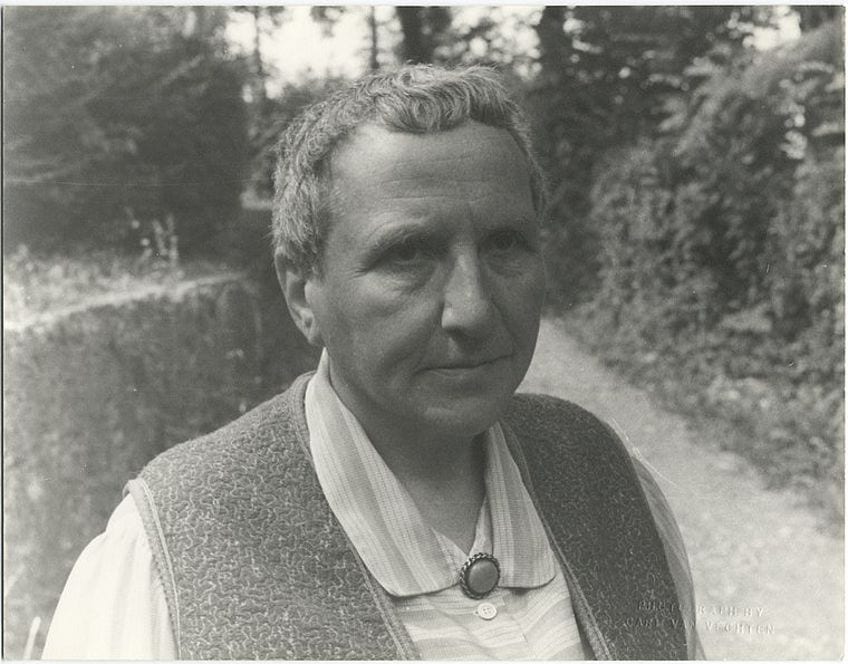
Gertrude Stein’s Influence
Stein’s influence on the arts was significant. Not only did she collect artworks, but she was also an important patron to artists. Her association with Pablo Picasso came during a pivotal time in his career, as he navigated the transition from his Rose Period to the inception of Cubism.
Stein’s Role in Picasso’s Career
Stein played a pivotal role in Picasso’s journey as an artist. She introduced him to key figures in the art scene, including her brother Leo Stein, poet Max Jacob, and fellow painter Henri Matisse.
Her patronage and support were crucial as Picasso pursued his artistic exploration that would eventually lead to Cubism.
Collaboration and Friendship
Gertrude Stein was not only the subject of one of Picasso’s important works; her support was instrumental in his development as an artist. The portrait, which took nearly 90 sittings to complete, was done at the Bateau-Lavoir, Picasso’s Montmartre studio at 13 Rue Ravignan. The collaboration deepened their friendship and reinforced Stein’s role as a muse in Picasso’s evolving artistic narrative.
Formal Analysis
The Portrait of Gertrude Stein by Pablo Picasso is a study in the use of simplified color and powerful line work to convey character and form. This section breaks down these specific elements of the painting.
Color
Picasso’s palette for this portrait is largely subdued, consisting of earthy tones that merge the figure with the background. The artist uses ochres, browns, and grays, with subtle shifts in hue to model Stein’s form.
These colors underscore the solidity of the composition.
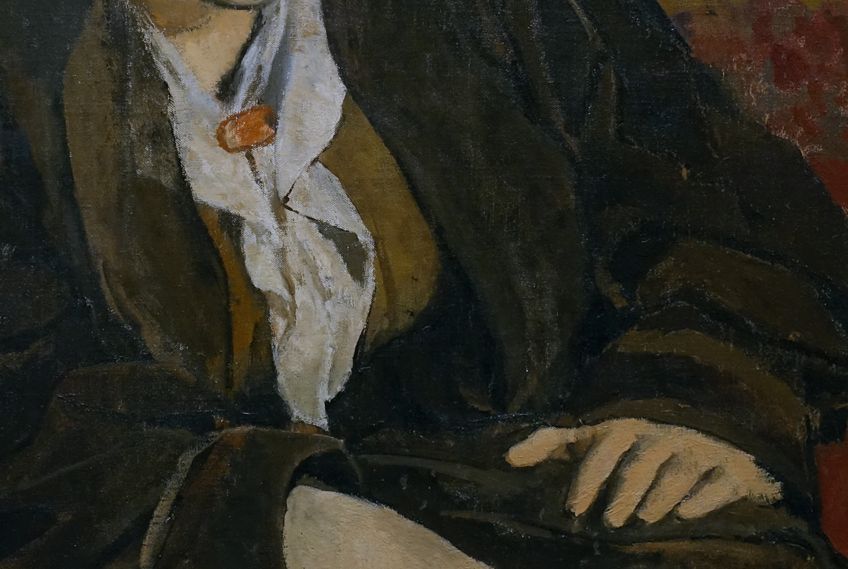
Line
The lines in the “Portrait of Gertrude Stein” are bold and defined. Picasso employs a variety of line weights to outline the figure and features of Stein. Her face is framed by sweeping lines that suggest volume.
More delicate and precise lines capture the finer details of her expression.
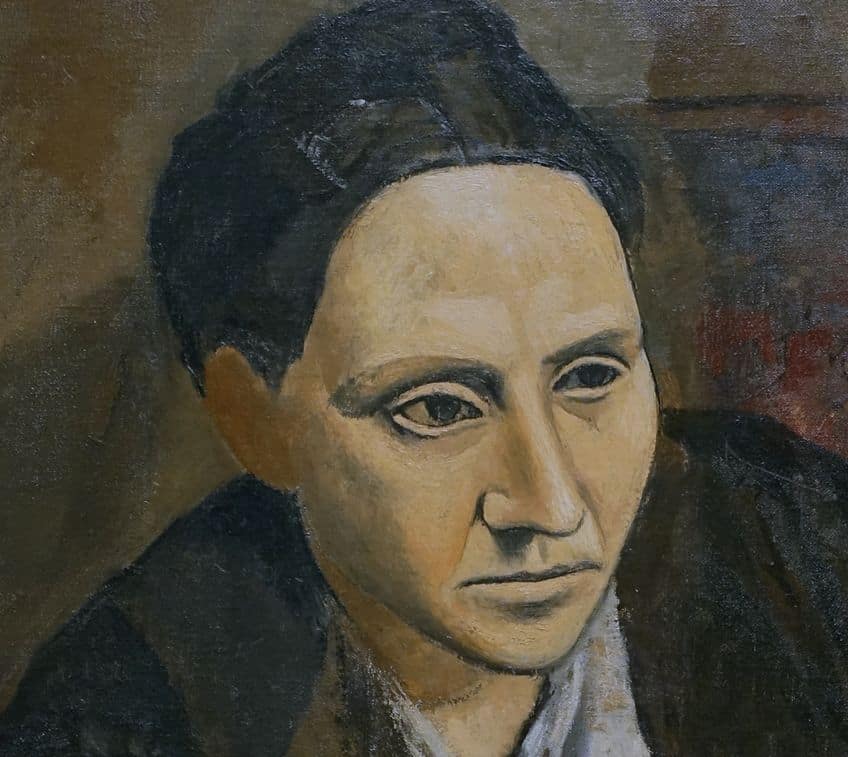
Legacy and Influence
The “Portrait of Gertrude Stein” by Pablo Picasso is a masterwork that continues to reverberate through the history of art, embodying the transformative power of portraiture in Western art and encapsulating key elements of Cubism and Modernism.
The Portrait in Modern Context
The Metropolitan Museum of Art, colloquially known as “The Met,” is the current custodian of Picasso’s Portrait of Gertrude Stein. This oil on canvas is more than a mere depiction of the American writer; it is an exemplar of Modernism and a testament to the power of the artist to capture the essence of a subject’s character. The portrait remains an essential reference in studies of Cubism, with its deconstructed form and reimagined perspective showing clear divergence from classical portraiture.
Gertrude Stein, beyond being an American writer and expatriate, was an influential figure in the modern literary and art scenes.
With her brother, Leo Stein, she cultivated an environment that fostered the growth of Modern art. Her likeness, as rendered by Picasso, stands as a symbol of the intellectual and artistic communities of the era, highlighting her role both as a muse and as a patron of the arts.

Within The Met and other institutions, the portrait is frequently showcased in discussions about characterization within Modern art. Its presence in a premier museum like The Metropolitan Museum of Art contributes to its historical significance and reinforces the narrative of Gertrude Stein not merely as a poet and writer but as an enduring figure in the legacy of Modernism.
Picasso’s Cubist approach to the portrait was revolutionary, hinting at the shift that Western art was about to make towards abstraction. This painting’s influence endures, reflecting the modern era’s embrace of new ways of seeing and depicting the world, signaling a broader societal readiness to accept transformation in artistic expression.
Picasso’s depiction of Stein is celebrated for its intriguing blend of representational and proto-Cubist elements. As Stein sat for Picasso some 90 times, the final portrait emerged not just as a likeness, but as a statement of the sitter’s character and the artist’s innovative approach to portraiture. Picasso’s distinctive strokes and simplified forms hint at his move towards Cubism, bridging the traditional with the modern.
Isabella studied at the University of Cape Town in South Africa and graduated with a Bachelor of Arts majoring in English Literature & Language and Psychology. Throughout her undergraduate years, she took Art History as an additional subject and absolutely loved it. Building on from her art history knowledge that began in high school, art has always been a particular area of fascination for her. From learning about artworks previously unknown to her, or sharpening her existing understanding of specific works, the ability to continue learning within this interesting sphere excites her greatly.
Her focal points of interest in art history encompass profiling specific artists and art movements, as it is these areas where she is able to really dig deep into the rich narrative of the art world. Additionally, she particularly enjoys exploring the different artistic styles of the 20th century, as well as the important impact that female artists have had on the development of art history.
Learn more about Isabella Meyer and the Art in Context Team.
Cite this Article
Isabella, Meyer, ““Portrait of Gertrude Stein” by Pablo Picasso – A Formal Analysis.” Art in Context. January 25, 2024. URL: https://artincontext.org/portrait-of-gertrude-stein-by-pablo-picasso/
Meyer, I. (2024, 25 January). “Portrait of Gertrude Stein” by Pablo Picasso – A Formal Analysis. Art in Context. https://artincontext.org/portrait-of-gertrude-stein-by-pablo-picasso/
Meyer, Isabella. ““Portrait of Gertrude Stein” by Pablo Picasso – A Formal Analysis.” Art in Context, January 25, 2024. https://artincontext.org/portrait-of-gertrude-stein-by-pablo-picasso/.


